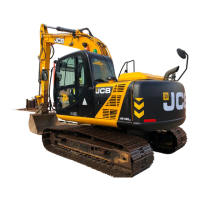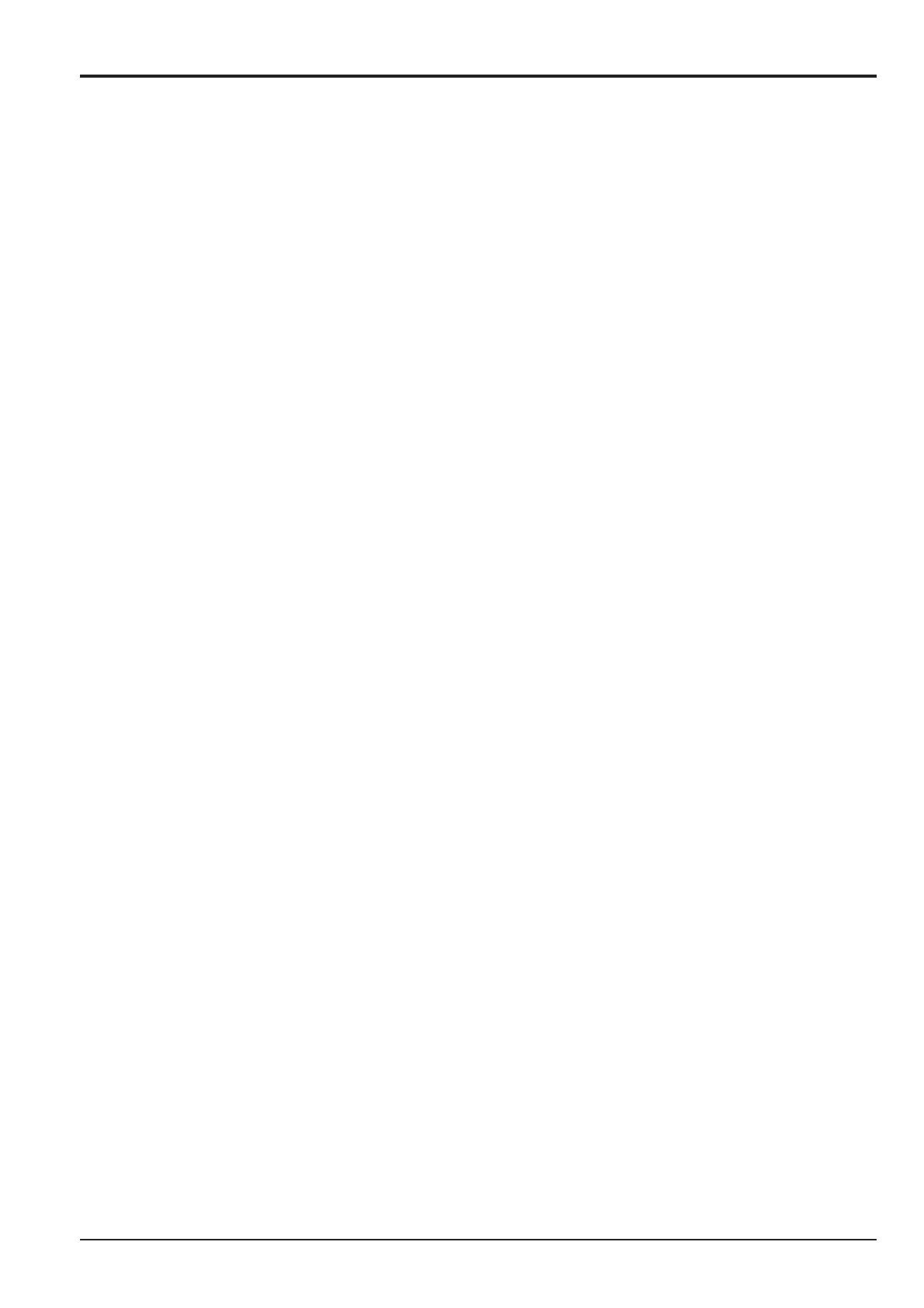40 - 3
Operation
The assembly of the pilot pressure control valve is shown on
page 40 - 2.
The pressure reduction unit is comprised of spools 17,
pressure control springs 14, return springs 15, spring seats
13 and split washers 12. The spools 17 are held against the
plungers 11 by the return springs 15. When the control
handle is tilted, the plungers 11 move down, depressing the
return spring seats 13, simultaneously compressing the
pressure control springs 14, moving the spool, allowing
hydraulic oil to flow to the designated pilot port.
The lower end of the main body 1 contains the main inlet
port P, outlet port T to tank and the pilot pressure outlet
ports 1, 2, 3 and 4.
The pilot pressure controls the stroke and direction of the
main control valve spools. This is achieved by providing a
spring at one end of the main control valve spools and
applying pilot pressure to the opposite end. (In some cases,
pilot pressure is applied to both ends of the control valve
spool.)
Function
Oil supplied by the hydraulic pilot pump enters at port P and
the function of the spools 17 is to direct oil from the inlet
port P to the output ports 1, 2, 3 and 4 or alternatively, to the
exhaust port T to tank. The pressure control springs 14 act
on the spools 17 to determine pressure at each port.
Plungers 11 slide in the guides 8 to vary the compression in
the springs 14. The control handle, fixed to the adjusting nut
24 and circular rocker plate 25 is operated to move the
plungers 11. The control handle is able to rotate 360° around
the knuckle joint 26.
The return springs 15 operate between the casing 1 and the
seats 13, regardless of the outlet pilot pressure, returning the
plungers 11 to their outer positions, ensuring the spools 17
return to their neutral (closed) positions. The springs 15 also
provide a resistive force, giving the operator a ‘tactile feel’ of
the controls.
Section E Hydraulics
9803/6410
Section E
40 - 3
Issue 1
Remote Control Valve (Services)

